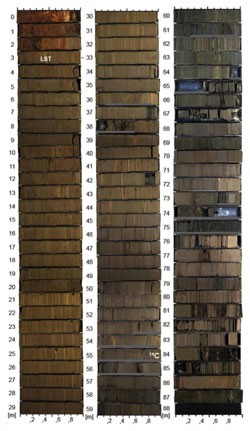Fire became – from a point of time, yet unknown and certainly long before the beginning of the Neolithic age –, an important means of human impact on landscapes. Furthermore, changes in climate, vegetation and land use frequently went along with regional burning events. As a result, black carbon (BC) from incomplete combustion has been left behind. The majority of this BC has been preserved in soils and sediments until present date. Hence, BC is an ideal indicator for the environmental and land use conditions within the considered time frame.
Project D6 aims at utilising contents and properties of BC as an indicator for past burning conditions. Furthermore, the analysis of BC may indicate when and under which climatic, vegetation and land use conditions burning events most frequently took place.
The first samples to be analysed are sediment samples from Jungferweiher and Dehner Maar, Eifel, Western Germany (approximately 0-120 ka BP and 0-70 ka BP respectively; provided by Prof. Dr. Frank Sirocko, University of Mainz, Project ELSA – Eifel Laminated Sediment Archive) with the benzene polycarboxylic acid (BPCA) method to test for BC..
Maar lake sediments are excellent archives of climate conditions, which accompanied the arrival of Homo sapiens and his inventions in NW-Central Europe.
|
|











